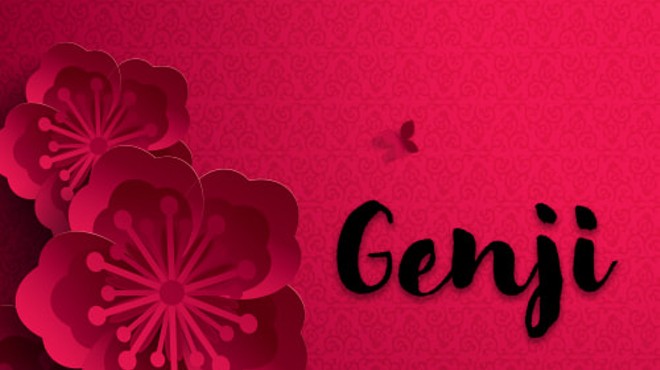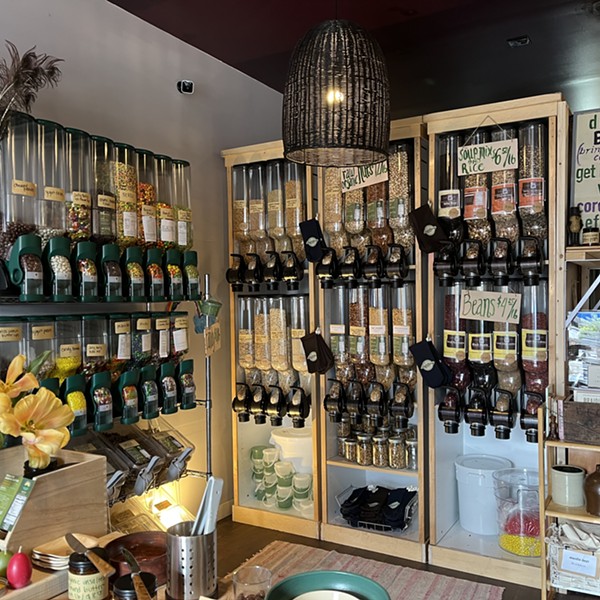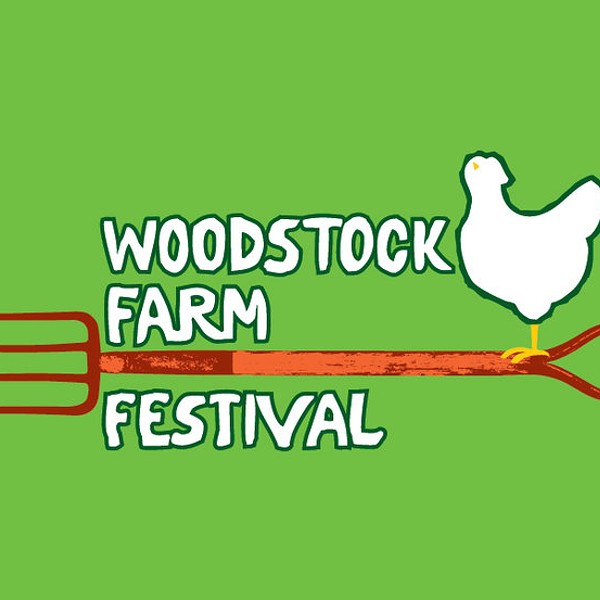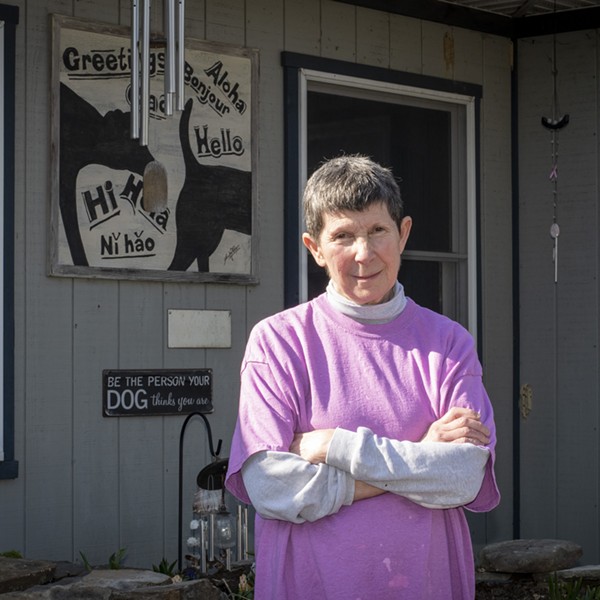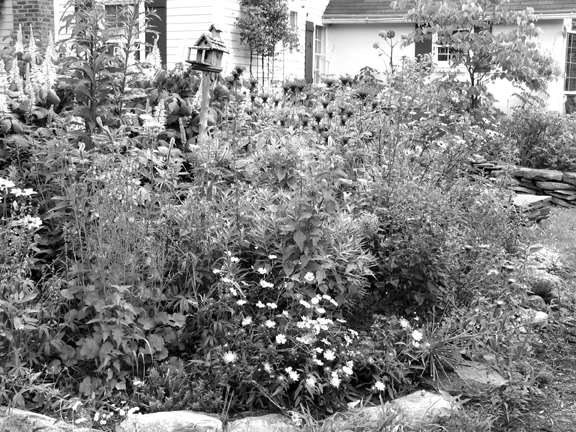
“I’m not anti-lawn,” says Ethan Zickler, landscape designer and owner of Eden Design in Kerhonkson. “It’s just that the classic American close-cropped lawn is unsustainable and inefficient.”
Every year, 67 million pounds of pesticides and 3 million tons of fertilizers are dumped on American lawns. Over 40 pounds of nitrogen in grass clippings are thrown away each summer (grass clippings account for 50 percent of waste sent to landfills during growing season). The obsession with the Great American Lawn is deeply rooted in our collective conscience, as displayed by these staggering statistics. Although the craze has produced spectacular landscapes and rampant greenery, many of our most commonly used lawn care techniques and supplies are out of sync with our native ecological system. However, there are ways to maintain a beautiful yard without causing much disruption, and there are species in our backyards that we’ve been conditioned to exterminate that may be beautiful from a different perspective.
One alternative method of lawn care is to follow the permaculture model (a contraction of “permanent agriculture”), a school of thought that strives for a harmonious integration between human dwellings, microclimate, animal life, plants, and soils. Big differences can be made by following some small, simple steps in our own backyards.
According to Ethan Zickler, it’s paramount that lawns not be treated with chemicals and fertilizers—killers of apparent pests. Still, he maintains that it is possible to have a well-maintained, clipped lawn for walking and playing while refraining from using too many chemicals. “You can manage insects and PH balances by simply composting, which is the ultimate fertilizer,” says Zickler. “A thin layer of compost once or twice a year is the sustainable way to feed the lawn.”
“The number one thing you should do is compost—try and use any scrap that you generate, all the parts of plants that you don’t use,” says Mark Adams, president of the Dutchess County Farm Bureau and owner of Adam's Greenhouses. According to Adams, little bluestem, a native alternative grass that produces a meadow as opposed to a traditional lawn, is a sustainable alternative to the commonly used Kentucky bluegrass. Little bluestem, which grows wild all over the Catskills, needs to be mowed only once a year, in July. “If you mow this meadow once a year, you’ll be amazed at the amount of native wild-flowers that start to take over,” says Adams. One that you can expect to see is the black-eyed Susan, a flower that’s similar to a daisy in appearance but with orange petals and a black center.
In the backyard, clover and dandelion are commonly seen as negative or “invader” species. Though it may be pleasing to the eye to get rid of these supposed pests, doing so chemically involves destroying important soil organisms that keep grass healthy in a number of unseen ways, and those chemicals ultimately find their way into our water system. Even a natural or organic fertilizer can cause problems when used in excess. “Grass can take only what it needs,” says Zickler. “The excess goes away and becomes unseen, but it can be very harmful to our water.” Constant watering is another common unsustainable practice. Short, shallow watering keeps the roots competitive at the surface of the soil, necessitating more and more wasteful watering every time you run the sprinkler. “Less mindless tending to the lawn with water is the way to go,” says Zickler.
There aren’t any bad plants, only ones that are misused and overused. Many plants commonly found in yards are invasive. Cultivating a sustainable backyard doesn’t mean you can only grow indigenous flora, but there are distinct advantages in going native. Barberry, a very commonly found invasive plant with a nice fall color and bountiful berries, is cause for disruption in our area because its Japanese origin. Its prevalence in our area could cause the drowning out and extinction of our endemic species. “When looking at barberry, we might say, ‘Look at that plant! It’s thriving here!’ When, in fact, it’s taking the place of our native species,” says Zickler. “If we continue planting other things, we could end up with a real shortage.”
Viburnum, a very popular hedge plant with strongly scented white flowers, dark green leaves, and blue-black berries, is an example of a sustainable shrub that could take the place of invasive plants found in many garden centers. “It’s a nice shrub and there are lots of different varieties,” says Adams. “Another is a crab apple tree. They’re really good for wildlife, they don’t get diseases, and they don’t need a lot of care.” These plants are good replacements for popular invasive species like Norway maple trees, which are vigorous in spreading its seeds, crowding out the native sugar maple. “The Norway maple tree is a beautiful tree, one that people like to plant in their yards, but it’s just not very sustainable,” says Adams.
Another commonly found invasive plant is the ornamental flowering pear tree. It’s been successfully modified to produce early and profuse flowers, but it doesn’t actually fruit. Rather than planting this sterile flowering pear tree, a fruiting pear tree could be planted in its stead. There are many uncommon and beautiful native fruiting plants. For example, serviceberry, a deciduous shrub that produces fragrant white flowers from May to June and sweet, round, purple/black fruits that have a taste similar to blueberries ripen in July. Another is the papaw, a small tree with big green leaves bearing large edible fruits that weigh anywhere from a few ounces to a pound and taste like bananas or mangos. “It’s a shame,” says Zickler. “To have plants like these so blindly planted when you could have a plant that actually bears fruit.”
As far as flowering replacements go, there are some great native hedge plants that can be used in place of the popular and invasive forsythia, which brings an explosion of yellow every spring. For example, one could look to the American cranberry bush, which grows up to 10 feet high, brings snowy white flowers in the spring, and has berries that hang through mid winter. Any wildflower, herb, or fruiting species automatically increases the activity and diversity of a garden, maximizing the amount of edible food for humans, birds, and other wildlife.
Sheet-mulching is a great, practical technique that takes the place of more conventional, toxic gardening practices. It begins with laying down nonnoxious waste (tea leaves, peelings, small food scraps) over a piece of land you’d like to plant upon and covering the area completely with a household item like newspaper or cardboard. Water this layer well and apply 75 millimeters of horse stable straw, poultry manure in sawdust, seaweed, raked leaves, or a combination. Cover this layer with 150 millimeters of dry, weed-free material, water, and you’re done. “It’s easy, and it takes the place of landscape fabrics or weed barriers—items that are too commonly used without a lot of consideration about harm they might do,” says Zickler. “These are mostly plastic materials that we lay down in our yards—totally unnecessary items to purchase that can be easily replaced with adequate mulching.”
There are berry-growing nurseries that can be found on the Internet, and locally, Catskill Native Nurseries is a great alternative source. If the nearest nurseries don’t carry an adequate supply of native species, it’s never a bad idea to raise the issue and ask them to place an order. “The consumer needs to let the distributor know that there is a demand for organic products,” says Zickler. “The kinds of garden products out there tend to be imported and of a highly commercial nature. The more local the product, the better.”
Resources for Native Plants
Catskill Native Nursery: Kerhonkson, (845) 626-2758; www.catskillnativenursery.com
Adams Fairacre Farms: Kingston, (845) 336-6300; Poughkeepsie, (845) 454-4330; Newburgh, (845) 569-0303; www.adamsfarms.com/mark_adams.htm
Phantom Gardener: Rhinebeck, (845) 876-8606; www.thephantomgardener.com








